For decades, a sandbar off the coast of Barbuda has restrained ocean currents and protected the Codrington Lagoon from the open sea.
Formed by the very same sandbar, the lagoon is an important ecological feature of Barbuda and is designated as a Wetland of International Importance under the Ramsar Convention.
But recently, the integrity of the sandbar has been compromised by breaches which have threatened the well-being of the Lagoon’s ecosystems and the livelihoods of Barbudans.
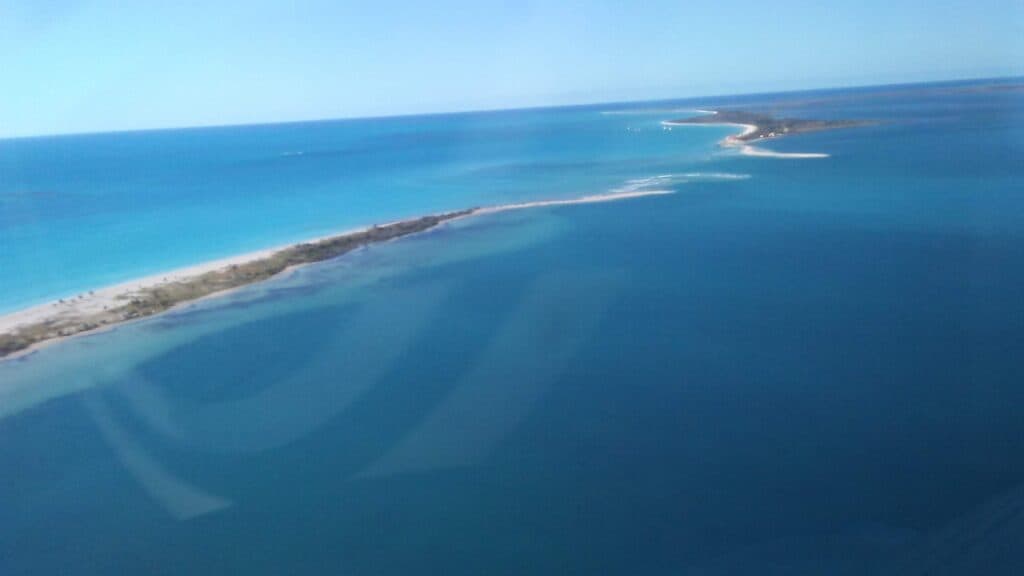
Breaches in the Lagoon’s defence
In 2017, a breach occurred in the sandbar after Category 5 Hurricane Irma made landfall on the island.
In the aftermath, Barbudan marine biologist John Mussington told Cari Bois the sandbar expanded by an estimated 400 metres.
The sandbar had not even fully recovered from the first breach when it was breached again, and widened even further, by unstable weather from a trough system which moved across the North East Caribbean in 2019.
Though the sandbar was breached in 1995 after the passage of Category 4 Hurricane Luis, it took less than six months to repair at that time.
This time around, researchers have observed the sandbar is taking much longer to naturally reconstruct itself.
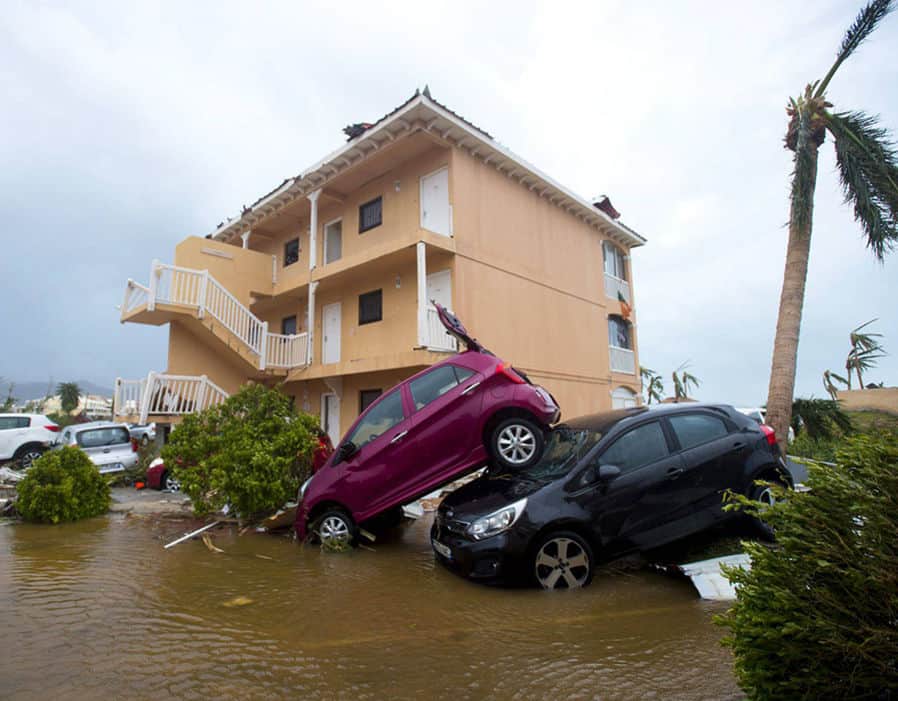
Lagoon’s ecosystem affected by breach
There are many unfavourable outcomes that can occur if the long lasting breach in the sandbar does not close.
For example, the breach has already allowed predator species to enter the lagoon.
President of the Barbuda Fisherfolk Association, Leroy Gore, confirmed to Cari-Bois that there has been an increase in the presence of lion fish and tiger sharks inside the lagoon.
Before, the sharks would normally occupy mangroves near the lagoon to breed.
But with the breach, these sharks have been spotted throughout the entire lagoon and Gore is fearful it poses a risk to the life of sea bathers.
He explained, “With the opening, we see a lot more activity happening within the lagoon.
We see the flow of water has introduced a lot more different types of species within the lagoon. Species that were not thriving prior.”
Barbuda Fisherfolk Association member, Deon Desouza, said fisher-folks have noticed a decline in certain fish like parrot fish, snapper, red hind, chub and grouper.
However, both Gore and Desouza said that decline can also be attributed to overfishing in the area, as these species are in high demand.
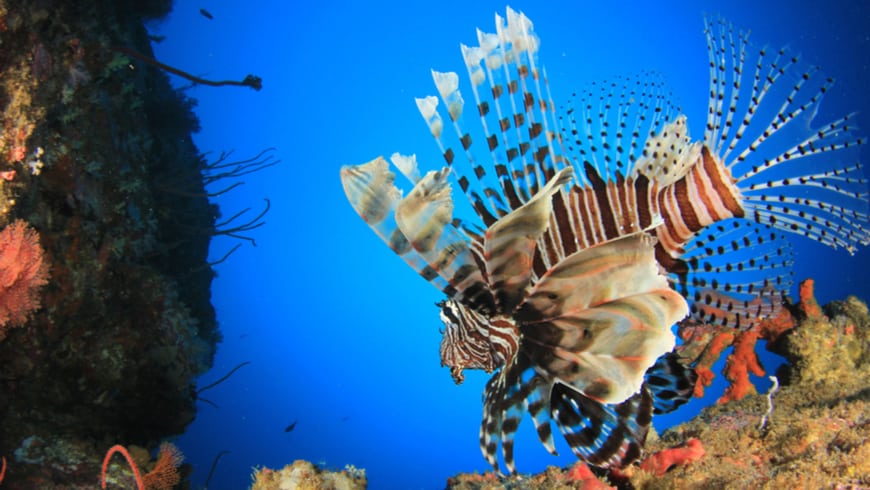
Effect of breach on species
Species like the spiny lobster, hawksbill turtle, leatherback turtle and a nesting colony of Frigate birds all use the lagoon as a nursery and feeding ground.
Mussington warns the inflow of ocean water will change the salinity level in the lagoon which can affect the ability of some species to thrive and can be consequential to other ecosystems like the country’s coral reefs.
“Larvae in the Lagoon are taken by ocean currents throughout the region so, what happens in Barbuda impacts everywhere else.
~ Barbudan marine biologist John Mussington
“The system works because there are certain parts of it that are isolated from the ocean. With that isolation it provides perfect sanctuary areas for juvenile fish, lobsters, conchs, all these things”
Historically, Barbudans have relied on fish as a major part of their diet and the lagoon supports a thriving lobster fishery.
Some Barbudans sell their lobster catches within the community, to hotels or export it to other Caribbean islands.
In some cases, fishing is the sole source of income for families on the island.
Therefore, any effects on the health and well-being of the island’s fisheries can affect food availability and livelihoods.
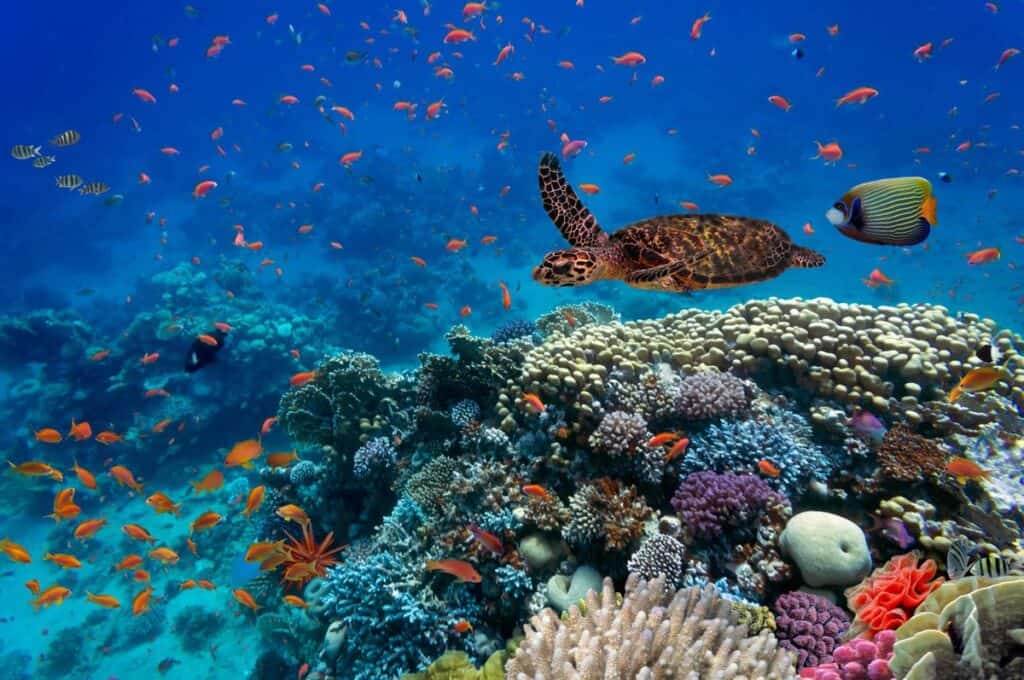
Breach in Lagoon’s defence increases disaster risk
A breakdown of the sandbar also means that a higher concentration of water is able to enter the lagoon and rush inland when there is heavy rainfall and inclement weather.
In January 2020, Philmore Mullin, the then Director of the National Office of Disaster Services (NODS) expressed concern about the development.
Barbuda’s highest point is only 125 feet above sea level and the island is only accessible by sea and air.
So in the event of a seaward disaster, the 1,500 people living on the island would be trapped.
To provide a way for people to evacuate upwards in the event of strong storm surges or widespread flooding, Mullen has suggested the construction of multi-storey buildings on Barbuda.
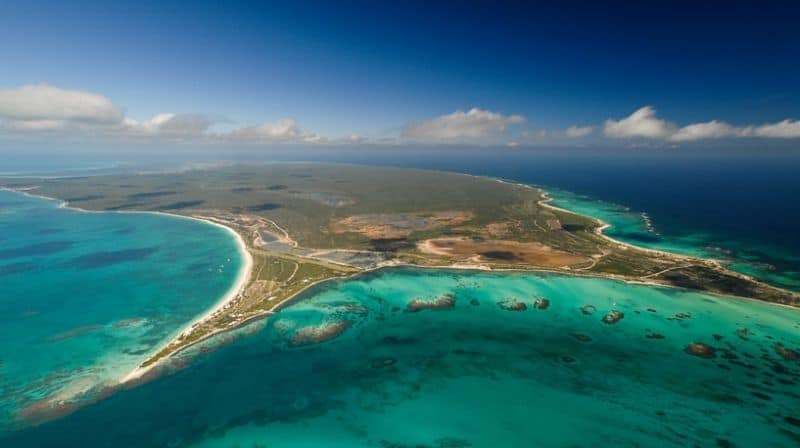
Breach exacerbated by development & climate change
In addition to rising sea levels, and the effects of more intense tropical cyclones associated with climate change, Mussington claims the construction of a hotel near the Lagoon contributed to an initial compromise of the sandbar.
He claims the issue started in 2004 when the hotel was allowed to be built “in a manner that went against the advice of the technical experts”.
He added, “The situation was made worse in 2010 when a decision was made to lease an additional 30 acres of the sandbar to the same individual. Again, technical advice was ignored.”
After construction to expand the building was completed in 2011, Mussington claimed erosion at a nearby beach was exacerbated and a ground swell issue in 2012 started to expose the foundation of the building.
Mussington pointed out that under the zoning plan for the Lagoon National Park, the area was declared a no-build area.
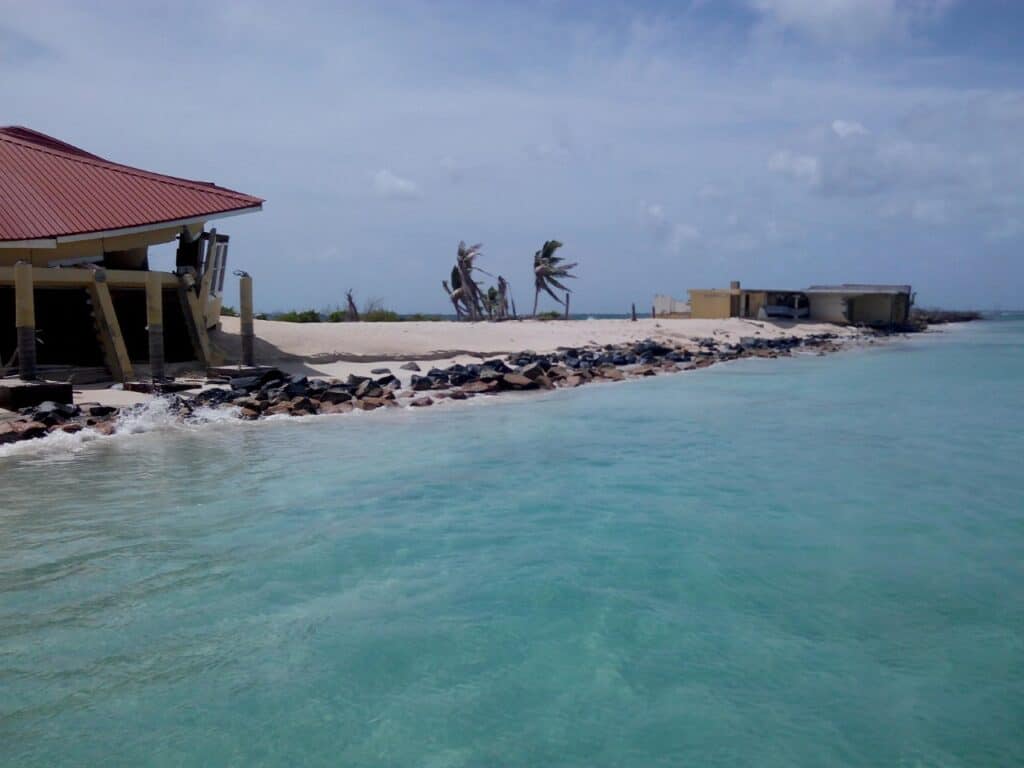
How can the Lagoon’s breach be remedied?
Notes shared by Mussington during a workshop in Antigua in November, 2019, quotes Mullin as saying that it would cost $100 million to build barriers to close the breach.
But Mussington said authorities need to address the effects of the geotextile at Cedar Tree Point, tend to environmental issues at Palmetto Point and break down the remains of the hotel to comprehensively remedy the problem.
An artificially-induced coral reef can also be used to change the shape of the coastline.
Mussington explained, “We have decided that the best course of action is to employ a technology that will actually help to grow the coral reef.
“If we can get them a boost so that they can actually grow and at the very least, not get worse from further storms.”
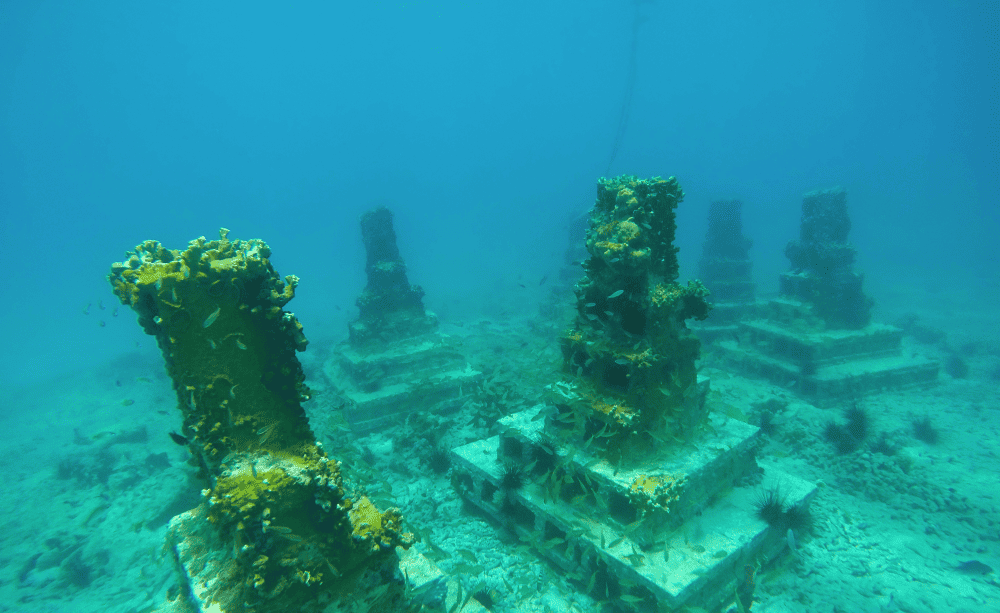
Mussingon said a technique called electro-deposition can help regenerate coral reef systems.
In this technique, electric current is run through a piece of iron which will cause a deposition of calcium carbonate that forms corals.
The low-voltage charge will use solar panels to accelerate the coral’s natural formation process.
Within a matter of months, Mussington believes that these corals will start to create their own ecosystems.
“You will actually stimulate coral and other marine organisms to grow on that skeletal structure. And that’s exactly what a coral reef is, a skeletal structure with various organisms growing on it and soon you have an entire ecosystem.”
~ Barbudan marine biologist John Mussington
The reefs will also allow sand to accumulate and in return grow the size of the beach within the lagoon with additional benefits of stimulating seagrass and mangrove growth inside the lagoon.
Mussington thinks a combination of these methods will reverse the destruction of the sandbar, or, at the very least, stop further erosion and create new ecosystems.
The proposal has been drafted and Mussington is working with a team to secure grant funding to pioneer this solution.





